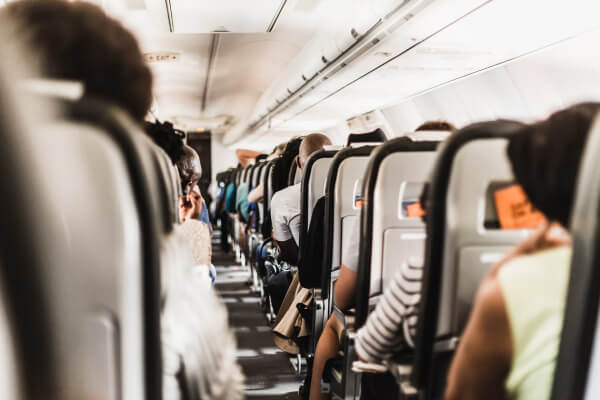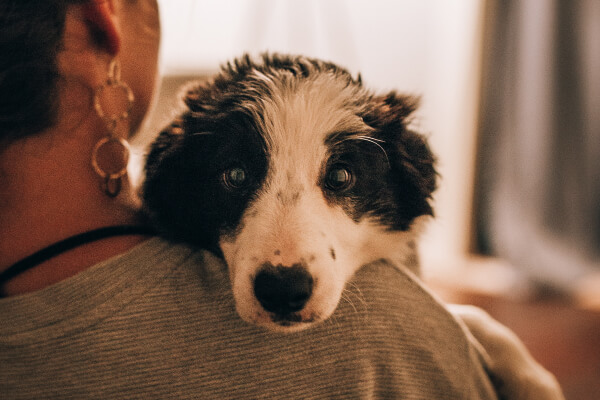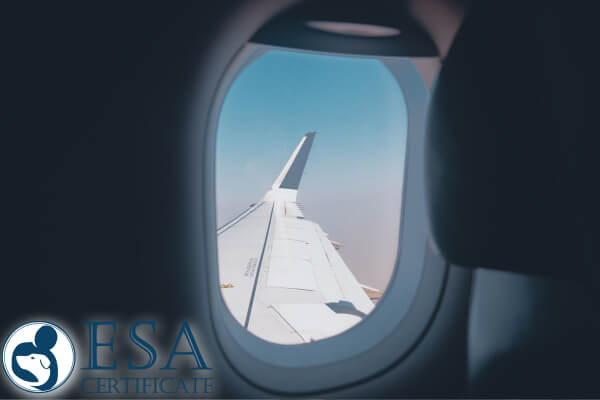After reading all the airline restrictions on traveling with a pet, you may wonder if there is an easier way to handle the whole situation. The answer is yes, if your dog qualifies as an emotional support animal (ESA).
Airlines allow you to travel with your emotional support animal at no additional cost or expense if you have an ESA letter. First, familiarize yourself with how strict the requirements are for your pet during the entire trip and what will be required of you if your pet is not ESA.
Requirements for pets in the cabin

1. On domestic flights, puppies and kittens must be at least 2 months old.
2. On international flights, puppies and kittens must be at least 4 months old, as a rabies vaccination is required.
3. You cannot put a pet on a plane and then board another plane.
4. If a minor is traveling unaccompanied by an adult, they cannot have a pet.
5. If there is an emergency in flight, there is no additional oxygen service available for your pet.
6. When you first arrive at the airport with your pet in the cabin, you will receive a bright yellow bag tag to attach to your pet’s cage.
7. Once in the cage, your pet will not be able to get out of the cage until you are outside the airport at your destination.
8. Dogs from places with a high risk of rabies are denied boarding unless they have a CDC permit to bring dogs in. This permit must be requested at least 6 weeks prior to travel. An alternative is a rabies vaccination certificate issued in the United States. Without a permit or vaccination certificate, the dog will be returned to the country of departure at your expense. High-risk countries for rabies include Belize, Brazil, Colombia, China, Dominican Republic, Ecuador, El Salvador, Ghana, Guatemala, Honduras, India, Nigeria, Peru, the Philippines and South Africa.
Most pet owners don’t like requirement #5 and say, “What do you mean, I can’t give my pet oxygen? He’s going to die!” – is usually the answer. Requirement #7 can also be a bit harsh on pets. What if he needs to go to the bathroom?
It’s not just a matter of requirements, it’s also a matter of cost. It costs $125 per flight to bring your pet aboard in his cage. If you have a flight with two connections, another $125 is added for each connection that is more than four hours within the U.S. and more than 24 hours outside the U.S.
And if you’re traveling with more than one airline, you must follow all the rules of each carrier.
Airline restrictions on carrying pets on an airplane

There are specific restrictions on carrying pets on an airplane: You’re not allowed to carry pets in the cabin – even in their cages – from or through Hawaii and any of the locations listed below, but you are allowed to carry them in the cabin on some United flights:
– Australia
– Barbados
– Cuba
– Guam
– Federated States of Micronesia
– Hawaii
– Hong Kong
– Iceland
– Iceland
– Marshall Islands
– New Zealand
– Palau
– Trinidad and Tobago
– Netherlands
– Montserrat
– South Africa
– Tahiti
– Trinidad and Tobago
– UK
And if you are lucky enough to get a “seated” permit in the cabin, there are additional restrictions:
1. Because there is limited storage space under the aisle and middle seats, if you are traveling with a pet in the United Economy cabin on a Boeing 757-200, you will have to take a window seat.
2. If you are traveling with a pet in the cabin, you cannot be seated in the emergency exit row or bulkhead, or in a United Airlines Premium Plus seat due to footrest restrictions under the seats.
3 Only two pets per flight can be accommodated on each aircraft in the Premium Class cabins on individual aircraft. However, on Boeing 757-200, 767, 777 or 787 aircraft, pets are not allowed in the premium class cabins at all.
4. There may only be four pets per flight in the United Economy® cabin on Boeing 737 and 757 or Airbus 319/320 for narrow-body aircraft. On the wide-body Boeing 767, 777 and 787, there can only be six pets per flight.
All of these rules you read about apply to United Airlines, but other airlines have similar rules.
Airline-approved dog carriers

After all the rules, there are more rules about the carriers you put your pet in.
Airlines have specific rules about how your dog can travel on an airplane.
They are listed below:
– The animal must be in an approved cage.
– The kennel can be hard or soft.
– The kennel must fit completely under your seat.
– You may not take the dog out and play with it during the flight.
– Maximum dimensions: 17.5 inches long x 12 inches wide x 7.5 inches high (hard kennels).
– If your pet cage is soft, its maximum dimensions are 18 inches long x 11 inches wide x 11 inches high.
– Your pet should be able to fit comfortably inside the kennel. This means it should be able to stand up and turn around without tilting its head.
– The pet should fit completely under the seat in front of you.
It is quite different if your pet is a service animal
The rules for service animals are quite different from those for pets in the cabin. A service animal is any breed of dog over 4 months old that is trained to perform a job or task for a person with a disability. A disability can be physical, sensory, psychiatric, intellectual, or other.
You can travel with a maximum of two service dogs. The dog sits on the floor in front of your seat. It cannot interfere with the passenger sitting next to you or in the aisles.
An emotional support animal (ESA) is different. It is a pet that provides support on an emotional level to someone who needs it. A pet can provide an immediate sense of calm for a person, usually with a disability.
Learn more about this issue. Getting an ESA certification is much easier than many people think, and it can help you deal with all the restrictions that airlines place on pets.
Get connected with a licensed healthcare professional to obtain an ESA letter


